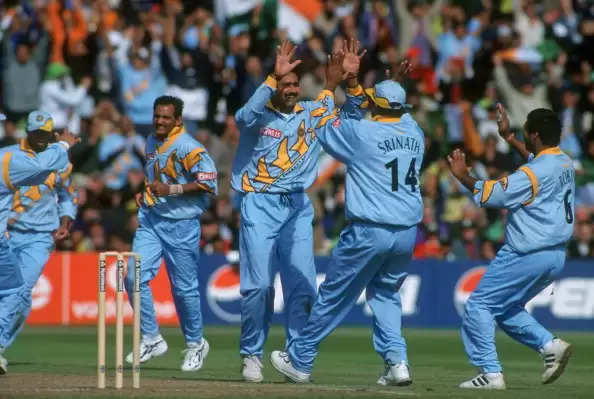White-ball cricket is generally considered to be titled in the favour of the batsmen. This is due to different factors like lack of swing or seam movement, fielding restrictions, improved bats, etc. However, it has always been proved that good bowling sides have been dominating world cricket.
There have been particular years when a certain bowling attack have dominated the opposition batsmen and have picked up lots of wickets, which in the end has only gone on to help them win matches. Bowling attacks are always crucial and play an important role in restricting the opposition. Here are a look at certain teams and the number of wickets they took in a particular Calendar year.
1 India – 315 (1998), 327 (1999)
Team India had a decent bowling attack during the year 1998. They played 40 ODIs in the year 1998 and picked up 315 wickets as a bowling unit. This went a long way in helping them win 24 out of that 40 ODIs at a fantastic win rate of 60 per cent. The likes of Javagal Srinath and Venkatesh Prasad, along with Anil Kumble were India’s main bowlers throughout this year. Ajit Agarkar though, was the standout bowler, picking up 58 wickets from 30 ODIs that year with best figures of 4-35.
The Men in Blue went on to better their wickets tally in the next year, picking up 327 wickets, although they won only 19 of their 43 ODIs that year, including a disappointing 1999 World Cup campaign that ended prematurely. Venkatesh Prasad was the pick of the Indian bowlers with 46 wickets from 35 ODIs, with best figures of 5-27.
2. Pakistan – 302 (1996), 326 (2000)

Pakistan had a very strong bowling attack during the 90s, with the likes of Wasim Akram, Waqar Younis, Saqlain Mushtaq, etc. in their ranks. Thus, it was natural for their bowling to dominate the opposition, and they ended up picking 302 wickets in the year 1996. Despite a quarter-final exit in the 1996 World Cup, Pakistan were good with the ball. That helped them win 23 out of their 39 ODIs that year. Mushtaq was absolutely brilliant, picking up 65 wickets in just 33 ODIs that year, with best figures of 5-29.
Pakistan produced an even better performance in the year 2000, picking up 326 odi wickets. The likes of Akram, Younis and Mushtaq were again at their best. Surprisingly, Abdul Razzaq was the highest wicket-taker for Pakistan with 61 wickets from 38 ODIs, with best figures of 5-48.
3. Australia- 304 (1999), 303 (2003)
Australia have dominated World Cricket in the late 90s and early 2000s and one of the main reasons for that has been the world-class bowling attack that they had, with the likes of Glenn McGrath, Brett Lee, Shane Warne, etc. They won the 1999 World Cup on the back of such World-Class bowling. Shane Warne was the star of the Australian bowling that year as he picked up 62 wickets in 37 ODIs with best figures of 4-29.
In the year 2003, Australia were an even better bowling attack and again won the 2003 World Cup, this time being even more dominant. They picked up 303 wickets that calendar year in just 35 ODIs. Out of those, they won an unbelievable 30 ODIs with 21 wins out of them coming in a row. Brett Lee was the pick of the Australian bowlers that year. In 24 matches he picked up 46 odi wickets with best figures of 5-30.
4. South Africa – 314 (2000), 307 (2002)

South Africa choked in the 1999 World Cup semifinal. But they always had the bowling attack to trouble the opposition. In the year 2000, the bowling attack led by the likes of Shaun Pollock and Alan Donald picked up 314 wickets. In 38 ODIs that year, Pollock led with 61 wickets with best figures of 5-20.
South Africa again topped the charts for wickets taken in a year as they picked up 307 odi wickets in the year 2002. Shaun Pollock again led the charts with 54 wickets from 38 ODIs, with best figures of 4-18.


